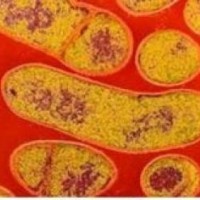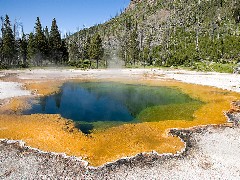Assignments due for today:
Bacteria labs analysis
pp.31-32 in the UP packet (Identifying Agents of Disease)--review for friday's test!!!
Assigned today:
Spice lab I-V (data tables)--10/25
Read Chp. 24 p.528-543 (complete backside of wksht)
Disease video due 10/31
Study for test on 10/28!!
Received a "study guide" for bacteria and viruses
Today in class, we watched a germ theory video and filled in our note packet up to page 23.
The germ theory is that a microorganism causes a disease (germs).
Be familiar with:
diptheria tuberculosis mumps
the common cold whooping cough pneumonia
influenza poliomyletis meningitis
malaria rabies ringworm
typhus infectious mononucleosis tetanus
chicken pox AIDS Rocky Mountain spotted fever
amebic dysentery streptococcal sore throat German measles
Botulism Athletes foot measles (rubeola)
Some key points in our packet:
- Nonspecific defenses (when the body doesn't distinguish one infectious microbe from another):
First line of defense= 1. skin
2. Mucous membranes (ex. eyes water)
3. secretions of skin and mucous membranes
Second line of defense= 1. Phagocytic (cell-eating) white blood cells
(part of the lymphatic 2. Defensive proteins
system) 3. The inflammatory response
- Specific defenses (immune system--when the body recognizes the pathogen):
Third line of defense=
1. Lymphocytes (white blood cells)
(part if the lymphatic 2. Antibodies
system)
A. Nonspecifics have two types of defense: External and internal.
Internal defenses are like the external's backup--they defend when an intruder gets by
the external barriers.
A type of internal defense is an interferons: they slow/stop viral replication
Where an infected cell "calls for help" and a neighboring cell sends proteins to inhibit
viral replication.
The inflammatory response= when tissue is damaged.
You know when the immune system is working when the injury (such as a small cut)
becomes red, swollen (because of blood vessels dilating) , and warm to the touch.
The lymphatic system consists of a network of vessels (similar to those of the circulatory system) and lymph nodes.
Its two main functions are to return tissue fluid to the circulatory system and to fight infection. It is the main "battle ground" for when the body is fighting infection.
B. Specific defenses: for when nonspecifics fail.
Immune system recognizes and attacks specific intruding microbes:
bacteria pollen parasitic worms
cancer cells house dust cells of transplanted tissue
protozoa mold spores
(all allergies)
Key players= antigens (elicit immune response) and antibodies (proteins found in blood plasma--mark invaders: neutralization and agglutination)
Antibody

Variable portion= there are two variable portions to each antibody so they can latch on to two different invading microbes. If enough accumulate and "clump" together (agglutination), the microbes cannot function.
STUDY FOR TEST:
Notes packet
bacteria/virus sheet (p. 31-32 in UP)
"study guide" handed out in class
NEXT SCRIBE: Sean











































